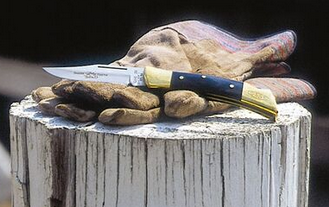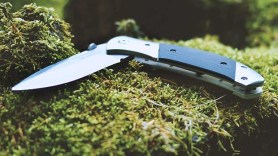

When it comes to knives, nearly all we ever hear about are new ways to sharpen them. You know what? However, you decide to go about putting a shaving sharp edge on your everyday carry pocketknife is a good one. Some methods may be more aggressive than necessary, but sharp is sharp. Unless you’re hooked on tradition, today there’s no need to spend hours and hours learning to use a whetstone and razor strop to sharpen a knife. Kits and sharpeners of all types and in all price ranges will help you keep your knives sharp if you’ll just use them.
Videos by Outdoors
But to make a knife last for decades, even generations, requires more care than sharpening alone. If you want to pass a pocketknife along when you become a Gramps or Gramma, give it some tender loving care by learning how to care for a pocketknife.
Prevent Rust
The greatest enemy of any knife is rust and corrosion. Given the right … or wrong … conditions, even stainless steel can rust. Once a blade is corroded, there’s never really any good way to completely hide that scar, so you must prevent rust from happening in the first place.
The best way to prevent rust is to keep the blade and all ferrous metal parts coated with a very light film of oil. Even if you live and carry your knife in a marine environment where salt is carried in the humid air, conscientious oiling will prevent corrosion. If your knife were to ever come in contact directly with saltwater, be sure to rinse it thoroughly under running fresh water, dry it, and recoat it with oil. Something like 3-In-1 oil or a good gun oil works great for this purpose.
To oil the blade of a pocketknife, simply put three or four drops of oil on one side of the blade and wipe it off with an oily rag. It works great to keep a small, soft rag well oiled and sealed in a Ziploc bag. Then you can use that cloth to wipe down any metal surfaces you want to keep corrosion-free.
Another big step in preventing corrosion of ferrous metals and discoloring nonferrous metals is never storing a knife for long stretches in a sheath. Even if your EDC knife is a folder you carry in a sheath on your belt, it should come out of the sheath when you’re not carrying it. Leather sheaths hold moisture and collect grit to which you do not want to expose your knife for extended periods.
Lubricate Regularly
To keep a folding knife operating smoothly and prevent unnecessary wear, it’s also important to keep the moving parts lubricated. You can use the same oil you used to coat the blade, but a thicker grease will last longer. Even better is a dry lubricant like Remington’s DriLube. It won’t create oil spots in your pants pockets.
Whatever you choose, it’s important the lubricant container offers a method to precisely place the lube where you want it. You don’t want to make a mess by hosing down your whole pocketknife.
On a locking liner knife, aim the applicator directly at the pivot area. Open and close a few times. If it’s smooth, you’re done. If it sticks or grabs, give it another shot.
For lockbacks and slip joints, open the blade or blades perpendicular to the handle and apply the lube into the notch at the tang. Check for smooth operation.
Simple. Keep it oiled, keep it lubed, don’t store in a leather sheath for long periods and a quality pocketknife can last for generations.








